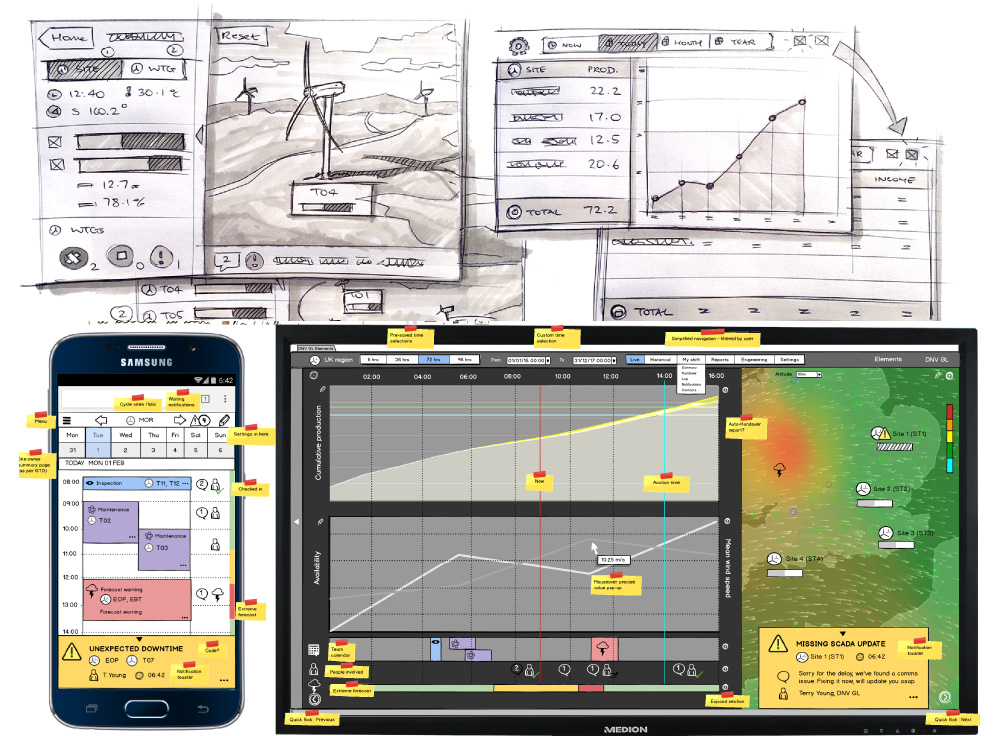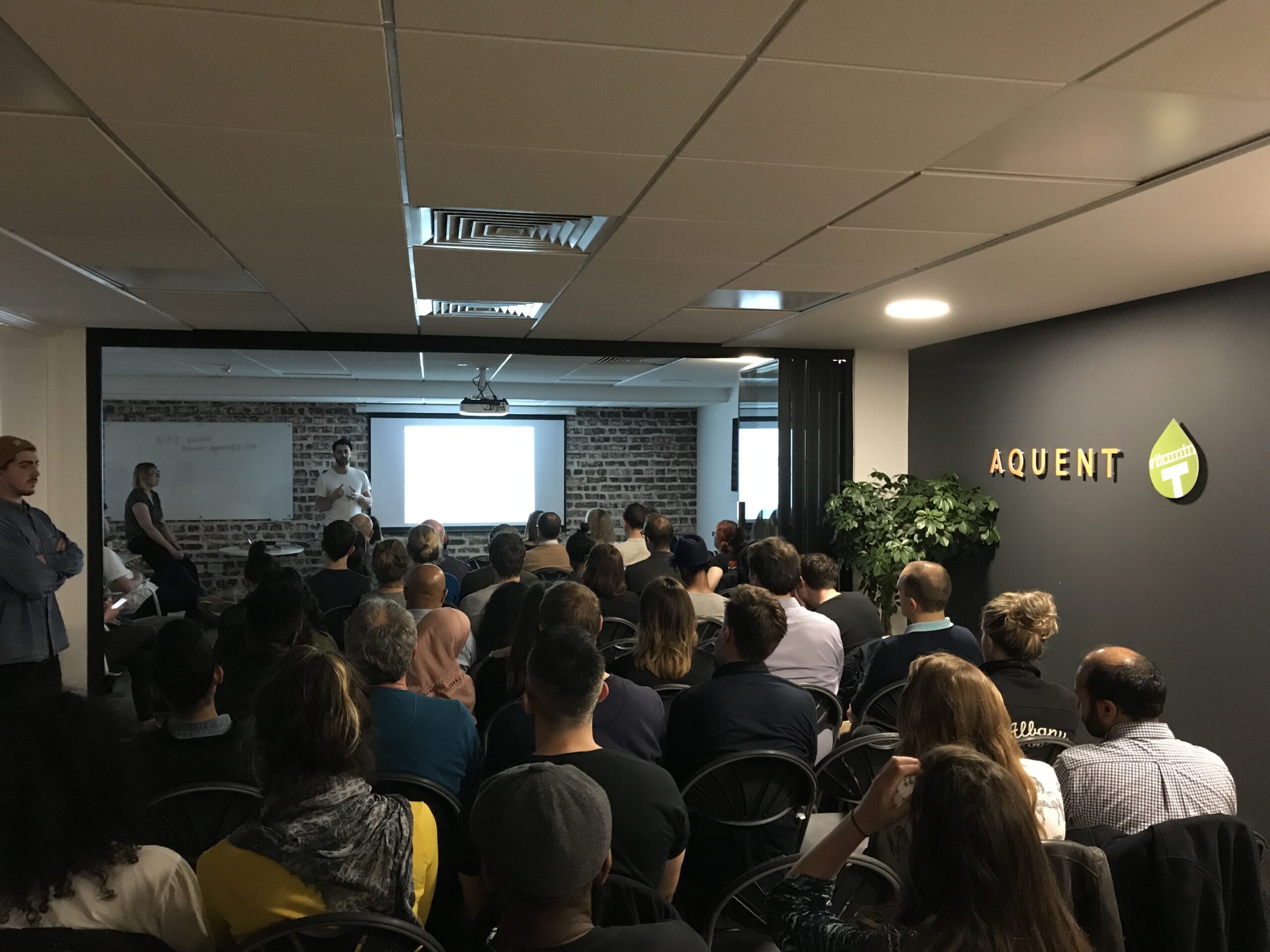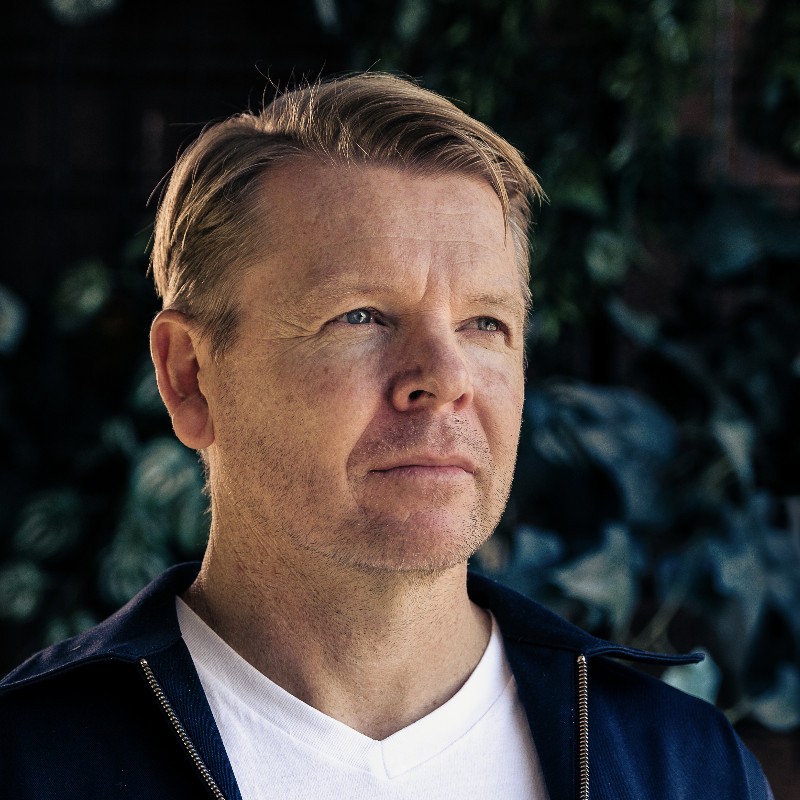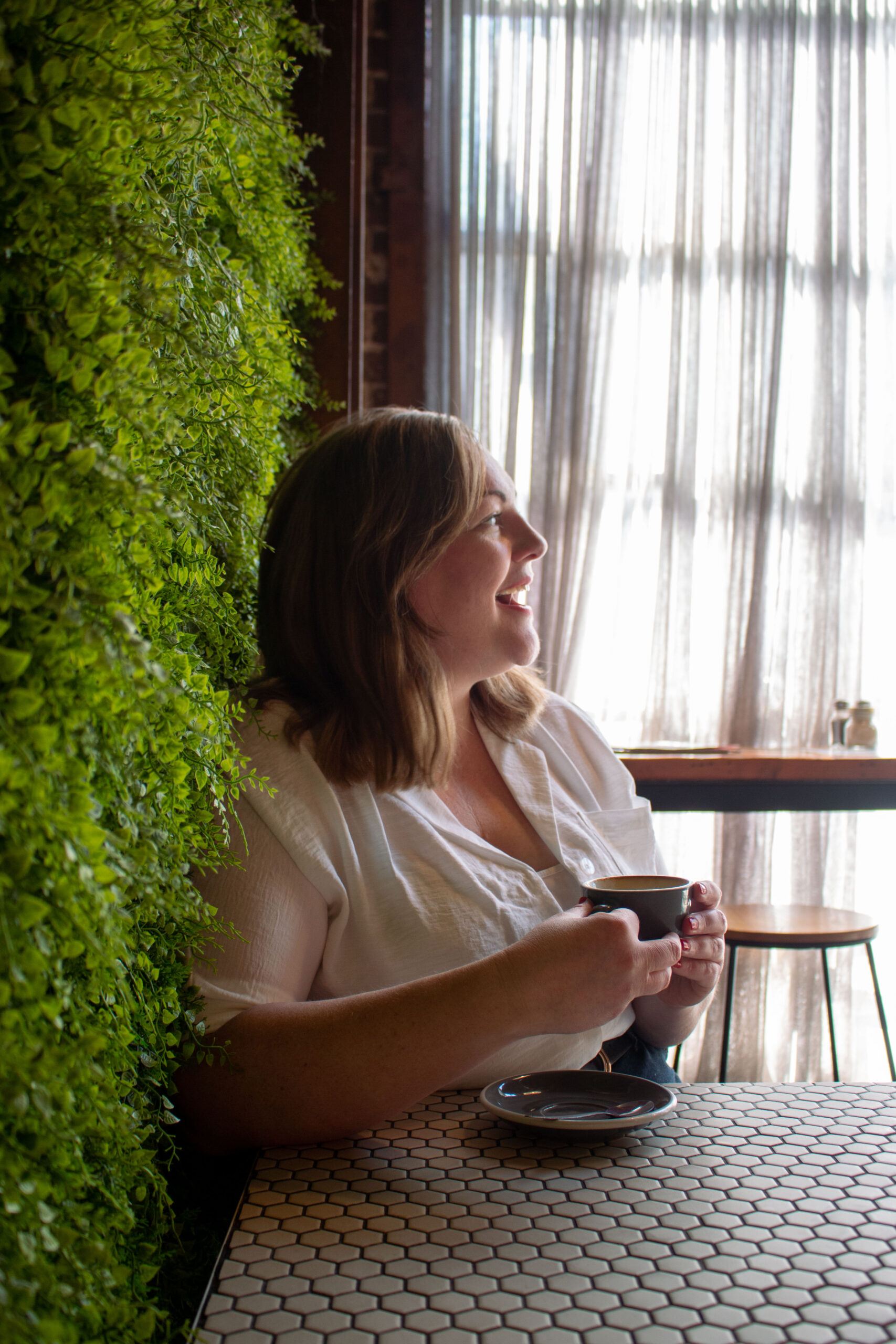Our London office recently hosted a UX Crunch event in association with The Digital Showcase. The event focussed on how to progress your UX career and featured three amazing speakers from MOO, EE and Rufus Leonard. Each speaker spoke about how they got into UX and what they look for in a UX hire, giving tips on interviews, portfolios and more.
Byron Fernandes, Senior Experience Designer at MOO, started off by asking what progress actually means. Most would see progress in their career as climbing the ladder, promotions, pay rises, etc. but Byron questioned whether there is more to it than that. He suggested thinking of your career as a relationship. The progression of a relationship could be seen in terms of life events such as moving in together or marriage, but ultimately the goal is to better relate to the person you are with and learn to understand and accept each other. Your career is the same, the goal is to understand and love your job. Promotions, pay rises, etc are just landmarks along that journey.
Craft your career path
Byron suggests that the first step in progressing your UX career is to work out the environment you will thrive in. You could try freelance working as a way of testing out various roles and responsibilities to see what best suits you, it’s a great way to explore your options without being tied into a contract. If freelance isn’t for you, you can also have variety in permanent roles by actively seeking out different projects, teams and people. Be curious about the people you work with too, everyone has different backgrounds and you can learn from them. Once you know the area you want to focus on, try to navigate your career towards that and recognise that you can shape a role once you’re in it. UX isn’t a rigid discipline and you have the power to control how things are done. The most important thing is to focus on doing what you enjoy, there’s no need to learn every aspect of UX and you can tailor the role to your skillset. If you want some help defining your own UX skills, check out our UX Spectrum.
Focus on soft skills
Although your hard skills are important, all our speakers agreed that soft skills are what really impress in an interview. It’s important to show that you have a real passion for UX. Attend as many events, talks and readings as you can and be active on social media. Make sure your interviewer can see that UX is more than just a job to you and you are fully engrossed. Show that you are empathetic, you need to be able to see the perspectives of others, whether that is who you are designing for or the people you are working with. You must be able to change the way you interact with others depending on who they are and their values and communicate your ideas in a way that makes them feel comfortable. Don’t be afraid to challenge ideas, all our speakers agreed when hiring they look for someone who can ask the difficult questions and always push for better design. Finally, be sure that you can show you are proactive and won’t simply sit around waiting for a brief to come in.
Show your process
Your CV and portfolio are integral when looking to progress your career. Matt Corrall, User Experience Lead at EE, gave some great advice on how to get yours up to scratch. Make sure your CV is succinct and not overly designed, the person reading it will have limited time. He suggests thinking of it as a mini UX project. Clarify your information, list everything in terms of priority and always help the reader to get the details they need quickly and easily. Try to imagine you are the person reading the document and design it to fit that user experience. For your portfolio, process is key. Matt warns that you should never jump to the final product and ignore how you got there. When hiring, he will always look at the journey a UXer has taken as opposed to the finished project. Have a small summary at the top that details what the project is, who the user is, who the team were, what role you played in the team, how long the project was, what the outcome was, whether it was launched and if so, how it did. If the project didn’t go ahead, that’s ok too! You still have a project and process to show and a story to tell. Keep it concise and visual with limited text. Your visuals also don’t need to be polished, low fidelity sketches work just as well. Show your iterations and that you can work with a wide and varied team of people. Be sure to provide evidence of your user testing, all projects need a reality check in some form, and most importantly show how the project evolved after that testing.

Embrace extracurricular activities
Andy Marshall, Head of User Experience at Rufus Leonard, is a great believer in immersing yourself in UX and his advice for progressing your career is to read and watch as much as you possibly can on the subject. In his role, he has introduced a UX book club and a UX film club where his team can get together and discuss current UX innovations or practices. You can find some of his recommendations for both below. He has also set up an initiative called Life Lessons. He gives his team a UX topic to go away and research, then they come back a present their findings, prompting them to keep learning. Andy’s advice is to soak up everything UX related, study human behaviour and never be afraid to fail as long as you learn from it.
Rufus UX Book Club's top three books –
The Design of Everyday Things, Revised Edition by Don Norman
This book has become a classic for anyone in UX, with the first edition being best described as a day in the life of Donald Norman where he teaches the basic principles of product design through interacting with all manner of everyday items, including light switches, electric hobs, fridges, and even door handles! Now in this revised edition Norman has brought his classic up to date, clarifying the role of ‘affordances’ which is a term that had been misunderstood by many designers, and introducing an all-new important term ‘signifiers’, which is a crucial element of interface design. This is the book that caused Andy to change his career 10 years ago!
Predictably Irrational, by Dan Ariely
This is another book that sits in most of the top 10 lists of UX books to read. It reveals how many of thousands of decisions we make each day, particularly when it comes to decisions on product price, are illogical and irrational. It is an easy introduction into the world of behavioural economics.
Webs of Influence, by Nathalie Nahai
Andy has been a fan of Nathalie Nahai’s work after discovering her presenting at a UX conference in 2013. If you have an interest in what UX designers can learn and leverage from psychology and neuroscience then this is a must read. It covers everything from persuasive design, to designing for audiences of different genders and cultures.
Rufus UX Film Club's top three films –
Design Hacking: Great UX without time, money, or design skills
Everett McKay
Everett McKay is the first person Andy heard talking about UI design as a conversation, and he loved his simplistic approach to design. With many clients asking for ‘intuitive’, Everett questions what it really means.
Using Visual Models to Solve Big Design Problems
Stephen Anderson
Andy has been a big fan of Stephen Anderson’s work since his book, Seductive Interaction Design was published in 2011. His Mental Notes cards are a must for any UX designers’ collection and he continues to push boundaries on how to leverage psychology to solve problems.
Dir. Gary Hustwit
Andy describes this film as a ‘thoroughly compelling documentary on product design with interviews from some of the greats of modern product design including Dieter Rams, and Jonny Ive’. It contains lots of lessons and inspiration for those working in UX.
Thank you to all of our experts for their great advice and guidance. If you have any tips you’d like to share, then please do so in the comments. Or if you’d like to attend any of our industry events, please get in touch!
Latest.

Juniors & Leaders: How To Fail In The Workplace The Right Way
Leadership, Thought Leadership, Job Seeker

The Right To Disconnect From Work—A Blessing Or Curse?
Thought Leadership

4 Important Steps To Review And Improve Your ERG
Diversity, Equity and Inclusion



